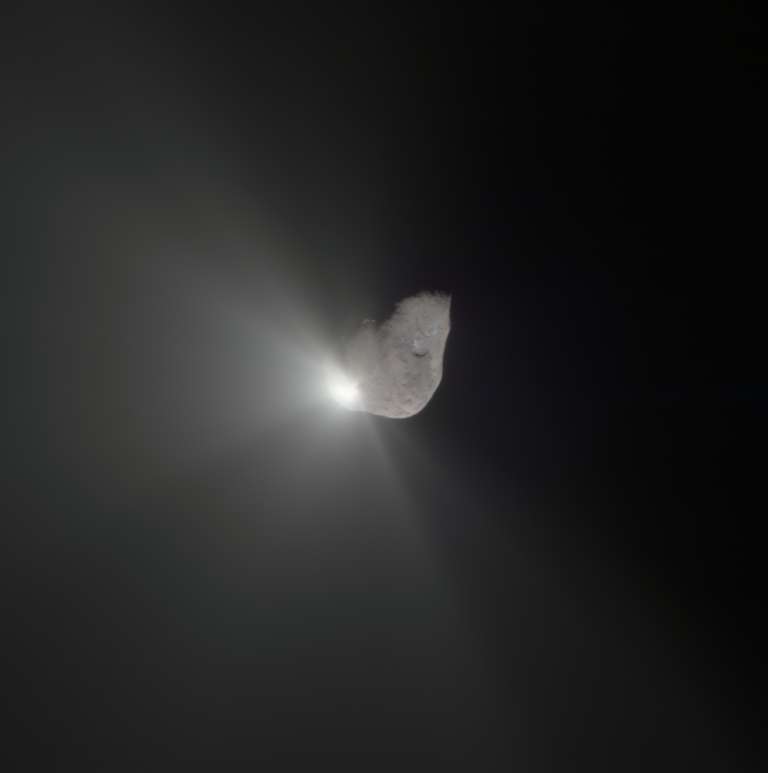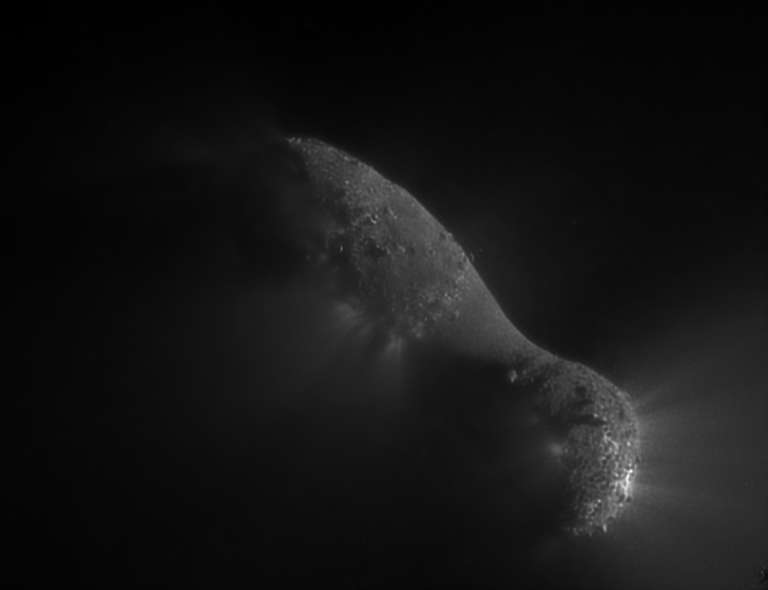Emily Lakdawalla • Sep 20, 2013
The Deep Impact Mission is officially over
The Deep Impact mission is over. The end was announced in a NASA press release today. There was a little more detail about what they believe to have been the problem:
After losing contact with the spacecraft last month, mission controllers spent several weeks trying to uplink commands to reactivate its onboard systems. Although the exact cause of the loss is not known, analysis has uncovered a potential problem with computer time tagging that could have led to loss of control for Deep Impact's orientation. That would then affect the positioning of its radio antennas, making communication difficult, as well as its solar arrays, which would in turn prevent the spacecraft from getting power and allow cold temperatures to ruin onboard equipment, essentially freezing its battery and propulsion systems.
See also this article from the University of Maryland.
Deep Impact brought us such wonderful images as this...

And this...

And this...

And this.

It was a wonderful, productive little mission that will be greatly missed, by me anyway. So long, friend.

Support our core enterprises
Your support powers our mission to explore worlds, find life, and defend Earth. You make all the difference when you make a gift. Give today!
Donate

 Explore Worlds
Explore Worlds Find Life
Find Life Defend Earth
Defend Earth

